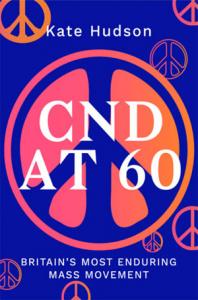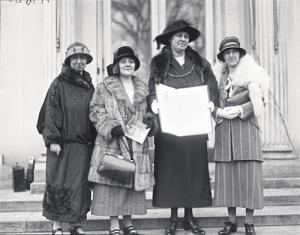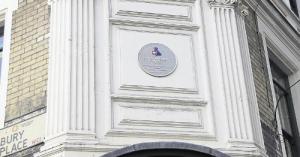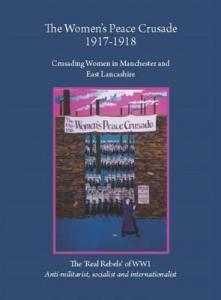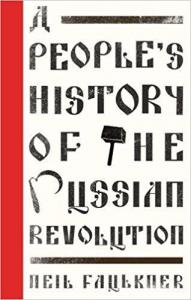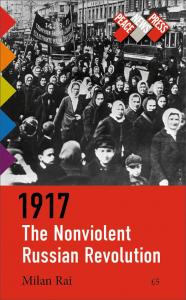The Peace News commemoration of the Russian Revolution (PN 2612–2613) accurately identified the role of nonviolent direct action in creating that inspiring event but offered no explanation of why it all ended in tears. Most historians accept that the revolution degenerated into authoritarian terror but activists disagree on the causes.
Leninists blame the ensuing civil war, Trotskyists blame Stalin, anarchists blame Lenin while an old Communist Party friend of mine…
Activist history
One of the key debates in CND from its inception was the role of ‘direct action’ and whether breaking the law was a permissible way of campaigning against nuclear weapons.
The first Aldermaston march in April 1958, which was organised by the Direct Action Committee (DAC) and supported by CND, really launched the new movement into the public eye and onto the political agenda. CND went on after the march to pursue a range of campaigning and lobbying activities, building local groups…
This book is a singular account of a community of action which didn’t just witness history, but was instrumental in changing it: Greenham Common Women’s Peace Camp. 25 years on, life experiences can be forgotten, so I am grateful to Howard and Moulin for collecting these reminiscences for posterity.
Like the film Pulp Fiction, this book begins at the end – with an action in 1993 where 16 women climbed into the grounds of Buckingham Palace to condemn nuclear testing in the…
Goals: A wage increase of 35 percent to cover ‘dearness’ (cost of living) for textile labourers. Or to reach agreement with the Mill Agents’ Group to settle the dispute through arbitration.
Success in achieving specific demands: 6 out of 6 points
Survival: 1 / 1
Growth: 3 / 3
A heavy monsoon season in 1917 destroyed agricultural crops and led to a plague epidemic claiming nearly 10 percent of the population of the city of Ahmedabad in the state of Gujarat. During the…
At the National Eisteddfod main literature awards, two Druids partly unsheathe a sword above the winning author’s head and ask the audience: ‘A oes Heddwch?’ (‘Is there peace?’) ‘Heddwch!’ (‘Peace!’) the audience shouts in return. Only when this ritual has been performed three times can the author sit in the bardic chair. So is Wales a peace-loving nation? What does our history and heritage tell us, and how are people…
The Campaign for Nuclear Disarmament nearly put itself out of business right at the beginning of its life.
CND started near St Paul’s cathedral, London, on 16 January 1958 at a meeting of the National Council for the Abolition of Nuclear Weapon Tests (NCANWT) and an invited group of national figures. NCANWT willingly handed over its office, its funds, its files, its paid organiser, and a public meeting it had organised for 17 February, to the new ‘Campaign for Nuclear Disarmament…
Goal: Suffrage for women of Kuwait
Success in achieving specific demands: 6 out of 6 points
Survival: 1 / 1
Growth: 3 / 3
The country of Kuwait acquired independence from the UK in 1961. Women seized the moment to seek further liberation. As an act of defiance, many women burned their robes, rejected notions of female dress. A year later, the Kuwaiti parliament passed new election laws that limited the electorate to men over the age of 21, whose families lived in Kuwait…
On 6 November, peace group British Pugwash, the Polish Heritage Society UK and the Polish embassy unveiled a plaque for Joseph Rotblat on the corner of Bury Place and Great Russell Street in London. The Polish nuclear scientist won the Nobel Peace Prize in 1995 for campaigning against nuclear weapons. Photo: Polish Heritage Society
In October, I travelled to Burnley for the trial of Sam Walton and reverend Dan Woodhouse (see p1). Walking to the court past derelict industrial buildings and rows of empty shops and pubs, I couldn’t help think of the Women’s Peace Crusade meetings held here exactly 100 years ago.
According to this short book, Burnley was once called ‘the largest producer of woven cotton in the world’ but, by the First World War, its economy had slumped. Over 4,000 young men from Burnley were…
Main goal: Prevent wage cuts
Secondary goal: Stop strikebreakers from working
Successes:
In achieving specific demands: 3 out of 6 points
Survival: 1 out of 1
Growth: 3 out of 3
Overall success: 7 out of 10
The campaign achieved its secondary goal of ending the use of strikebreakers. It also prevented further governmental and military intervention into labour conflicts in Sweden. However it is not clear if the strike prevented wage cuts. For that reason…
Reviewers agree that Neil Faulkner’s A People’s History of the Russian Revolution is a lively and readable account of the revolutionary events of 1917. It is also a distorted, dishonest disservice to the millions of Russian workers and peasants whose achievements Faulkner claims to celebrate.
Why should this matter to activists today? In particular, why should it matter to people committed to nonviolent revolution?
One reason is that when times get tough, and…
If there was ever a book that should be reviewed in Peace News this is it. Not only is 83-year old Margaretta D’Arcy a lifelong campaigner for peace but it was Peace News that drove her, at 79, to climb the fence at Shannon airport and protest on the runway – not once, but twice:
‘On the whole in the anti-war movement there was no real support for non-violent direct action. But then Peace News carried an article about an international week of protest…
Goals:
A 21.5 percent wage increase to match the inflation rate An end to the austerity measures, including layoffs and spending cuts A stop to the privatisation of state-owned companies, including telephone, gas, oil, and electricity.The union leaders achieved their main demand to increase wages. They were partially successful in pressuring the government to agree to delay and review their austerity measures and plans to privatise state companies, though they did not receive…
Soul of a Nation: Art in the Age of Black Power
12 July – 22 October 2017; Tate Modern; 10am – 6pm daily; £15, £13.10 concessions, under-12s free.
Mark Godfrey & Zoe Whitley
Soul of a Nation: Art in the Age of Black Power
Tate Gallery Publishing, 2017; 240pp; £29.99
‘The fantastic…
The Russian Revolution of 1917 would not have succeeded without fearless nonviolent action by hundreds of thousands of civilians and soldiers. Even the ‘storming’ of the Winter Palace on 25 October was largely nonviolent. Yes, there was plenty of revolutionary armed action in Russia in the course of 1917, but there were also many extraordinary, inspiring,…


